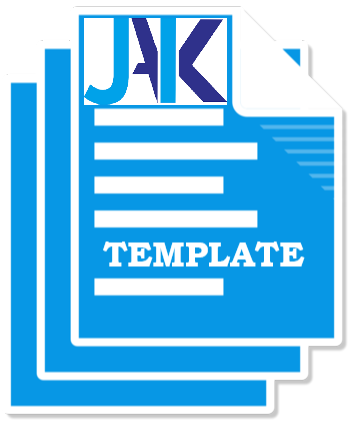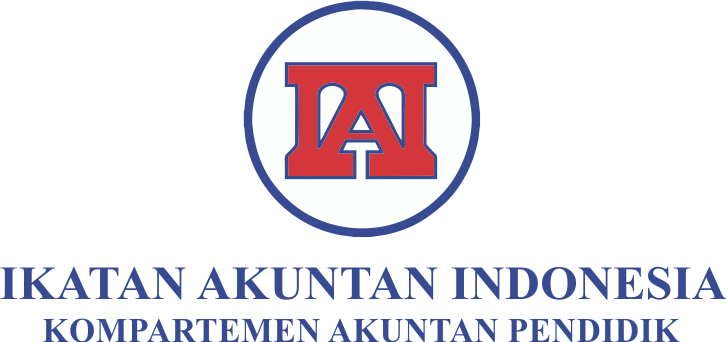The Role of Technology in Detecting Cyber Risk and Improving Internal Audit: A Systematic Review
Abstract
This research aims to explore the literature that examines the role of technology in assisting cyber risk detection and improving company internal audit in the digital era. The method used in this research is systematic literature review (SLR). Data sample collected using Watase-Uake database and articles from other sources with Q1-Q4 index starting from 2014-2023. The selected articles have passed several specified criteria to produce a total number of 25 articles. The result shows that technology plays an important role in increasing the efficiency and effectiveness of cyber risk detection and internal audit processes. This research contributes to providing an overview regarding the benefits of technology in helping companies detect cyber risks and improve the quality of their internal audits
Keywords
Full Text:
PDF (Bahasa Indonesia)References
Akinbowale, O. E., Klingelhöfer, H. E., & Zerihun, M. F. (2022). Development of a multi-objectives integer programming model for allocation of anti-fraud capacities during cyberfraud mitigation. Journal of Financial Crime. https://doi.org/10.1108/JFC-10-2022-0245
Barboza, A. O., Junior, F. N., Bortolotti, S. L. V., & Souza, R. A. de. (2016). Programação Linear Inteira Mista e Algoritmo Genético aplicados ao Problema de Transferência e Estocagem de Produtos em uma Indústria Petrolífera. Sistemas & Gestão, 10(4), 561–574. https://doi.org/10.20985/1980-5160.2015.v10n4.448
Bel, S., Youssef, H., & Boudriga, N. (n.d.). A resilient micro-payment infrastructure: an approach based on blockchain technology.
Betti, N., & Sarens, G. (2021). Understanding the internal audit function in a digitalised business environment. Journal of Accounting and Organizational Change, 17(2), 197–216. https://doi.org/10.1108/JAOC-11-2019-0114
Bonsón, E., & Bednárová, M. (2019). Blockchain and its implications for accounting and auditing. In Meditari Accountancy Research (Vol. 27, Issue 5, pp. 725–740). Emerald Group Holdings Ltd. https://doi.org/10.1108/MEDAR-11-2018-0406
Chang, V., Minh, L., Doan, T., Stefano, A. Di, Sun, Z., & Fortino, G. (n.d.). Digital Payment Fraud Detection Methods in digital ages and Industry 4.0.
Chen, S. (2022). Cryptocurrency Financial Risk Analysis Based on Deep Machine Learning. Complexity, 2022. https://doi.org/10.1155/2022/2611063
Eulerich, M., Pawlowski, J., Waddoups, N. J., & Wood, D. A. (2022). A Framework for Using Robotic Process Automation for Audit Tasks*. Contemporary Accounting Research, 39(1), 691–720. https://doi.org/10.1111/1911-3846.12723
Fan, C., Xiao, F., Zhao, Y., & Wang, J. (2018). Analytical investigation of autoencoder-based methods for unsupervised anomaly detection in building energy data. Applied Energy, 211, 1123–1135. https://doi.org/10.1016/j.apenergy.2017.12.005
Henry, T. M., & Ravi Ravindran, A. (2005). A Goal Programming application for Army Officer Accession Planning. INFOR, 43(2), 111–119. https://doi.org/10.1080/03155986.2005.11732720
Jain, N., & Raman, T. V. (2022). A partial least squares approach to digital finance adoption. Journal of Financial Services Marketing, 27(4), 308–321. https://doi.org/10.1057/s41264-021-00127-8
Johari, R. J., Mohd Razali, F., & Hashim, A. (2022). Enterprise Risk Management: Internal Auditor’s Role Perspective. International Journal of Academic Research in Accounting, Finance and Management Sciences, 12(1). https://doi.org/10.6007/ijarafms/v12-i1/11413
Kitsios, F., Giatsidis, I., & Kamariotou, M. (2021). Digital transformation and strategy in the banking sector: Evaluating the acceptance rate of e-services. Journal of Open Innovation: Technology, Market, and Complexity, 7(3). https://doi.org/10.3390/joitmc7030204
Korol, V., Dmytryk, O., Karpenko, O., Riadinska, V., Basiuk, O., Kobylnik, D., Moroz, V., Safronova, O., Alisov, E., & Mishchenko, T. (2022). ELABORATION OF RECOMMENDATIONS ON THE DEVELOPMENT OF THE STATE INTERNAL AUDIT SYSTEM WHEN APPLYING THE DIGITAL TECHNOLOGIES. Eastern-European Journal of Enterprise Technologies, 1(13–115), 39–48. https://doi.org/10.15587/1729-4061.2022.252424
Lois, P., Drogalas, G., Karagiorgos, A., & Tsikalakis, K. (2020). Internal audits in the digital era: opportunities risks and challenges. EuroMed Journal of Business, 15(2), 205–217. https://doi.org/10.1108/EMJB-07-2019-0097
Mat Ridzuan, N. I., Said, J., Razali, F. M., Abdul Manan, D. I., &
Sulaiman, N. (2022). Examining the Role of Personality Traits, Digital Technology Skills and Competency on the Effectiveness of Fraud Risk Assessment among External Auditors. Journal of Risk and Financial Management, 15(11). https://doi.org/10.3390/jrfm15110536
Mohan, V., Ben Othmane, L., & Kres, A. (2018). BP: Security concerns and best practices for automation of software deployment processes: An industrial case study. Proceedings - 2018 IEEE Cybersecurity Development Conference, SecDev 2018, 21–28. https://doi.org/10.1109/SecDev.2018.00011
Morales, H. R., Porporato, M., & Epelbaum, N. (2022). Benford’s law for integrity tests of high-volume databases: a case study of internal audit in a state-owned enterprise. Journal of Economics, Finance and Administrative Science, 27(53), 154–174. https://doi.org/10.1108/JEFAS-07-2021-0113
Pelc, A., & Schwarzmann, A. A. (Eds.). (2015). Stabilization, Safety, and Security of Distributed Systems (Vol. 9212). Springer International Publishing. https://doi.org/10.1007/978-3-319-21741-3
Plant, O. H., van Hillegersberg, J., & Aldea, A. (2022). Rethinking IT governance: Designing a framework for mitigating risk and fostering internal control in a DevOps environment. International Journal of Accounting Information Systems, 45. https://doi.org/10.1016/j.accinf.2022.100560
PwC. (n.d.). Shaping our future Our global network Our people Our revenues nues O O. www.pwc.com/annualreview
PwC’s-Global-Economic-Crime-and-Fraud-Survey-2022. (n.d.).
Ribas, J. R., Arce, M. E., Sohler, F. A., & Suárez-García, A. (2019). Multi-criteria risk assessment: Case study of a large hydroelectric project. Journal of Cleaner Production, 227, 237–247. https://doi.org/10.1016/j.jclepro.2019.04.043
Si, Y. (2022). Construction and Application of Enterprise Internal Audit Data Analysis Model Based on Decision Tree Algorithm. Discrete Dynamics in Nature and Society, 2022. https://doi.org/10.1155/2022/4892046
Slapničar, S., Vuko, T., Čular, M., & Drašček, M. (2022). Effectiveness of cybersecurity audit. International Journal of Accounting Information Systems, 44. https://doi.org/10.1016/j.accinf.2021.100548
Sudarma, M., & Kumalawati, L. (2022). Professional Considerations for Audit Risk in Creating Smart Governance in Indonesia. In Sudarma & Kumalawati | Professional Considerations for Audit Risk (Vol. 16, Issue 4).
Tiberius, V., & Hirth, S. (2019). Impacts of digitization on auditing: A Delphi study for Germany. Journal of International Accounting, Auditing and Taxation, 37. https://doi.org/10.1016/j.intaccaudtax.2019.100288
Wang, X., Zhao, T., & Chang, C. Ter. (2021). An integrated FAHP-MCGP approach to project selection and resource allocation in risk-based internal audit planning: A case study. Computers and Industrial Engineering, 152. https://doi.org/10.1016/j.cie.2020.107012
Weber, C., Bierwolf, R., Holzmann, T., IEEE Technology and Engineering Management Society., & Institute of Electrical and Electronics Engineers. (n.d.). Proceedings of the 2017 IEEE European Technology and Engineering Management Summit (E-TEMS) : “Digital Innovation for Advanced Manufacturing, Managing Technological and Entrepreneurial Challenges” : Oktober, 2017.
Xie, T., & Zhang, J. (2022). Data-Driven Intelligent Risk System in the Process of Financial Audit. Mathematical Problems in Engineering, 2022. https://doi.org/10.1155/2022/9054209
Zhu, H., Sun, J., Xu, L., Tian, W., & Sun, S. (2020). Permittivity Reconstruction in Electrical Capacitance Tomography Based on Visual Representation of Deep Neural Network. IEEE Sensors Journal, 20(9), 4803–4815. https://doi.org/10.1109/JSEN.2020.2964559
DOI: https://doi.org/10.37058/jak.v18i2.7675
Refbacks
- There are currently no refbacks.
Copyright (c) 2023 JURNAL AKUNTANSI

This work is licensed under a Creative Commons Attribution-NonCommercial-ShareAlike 4.0 International License.

Jurnal Akuntansi by Jurusan Akuntansi Fakultas Ekonomi dan Bisnis Universitas Siliwangi is licensed under a Creative Commons Attribution-NonCommercial-ShareAlike 4.0 International License.
Based on a work at http://jurnal.unsil.ac.id/index.php/jak.
Jurnal Akuntansi Visitor Counter JAK Stats





